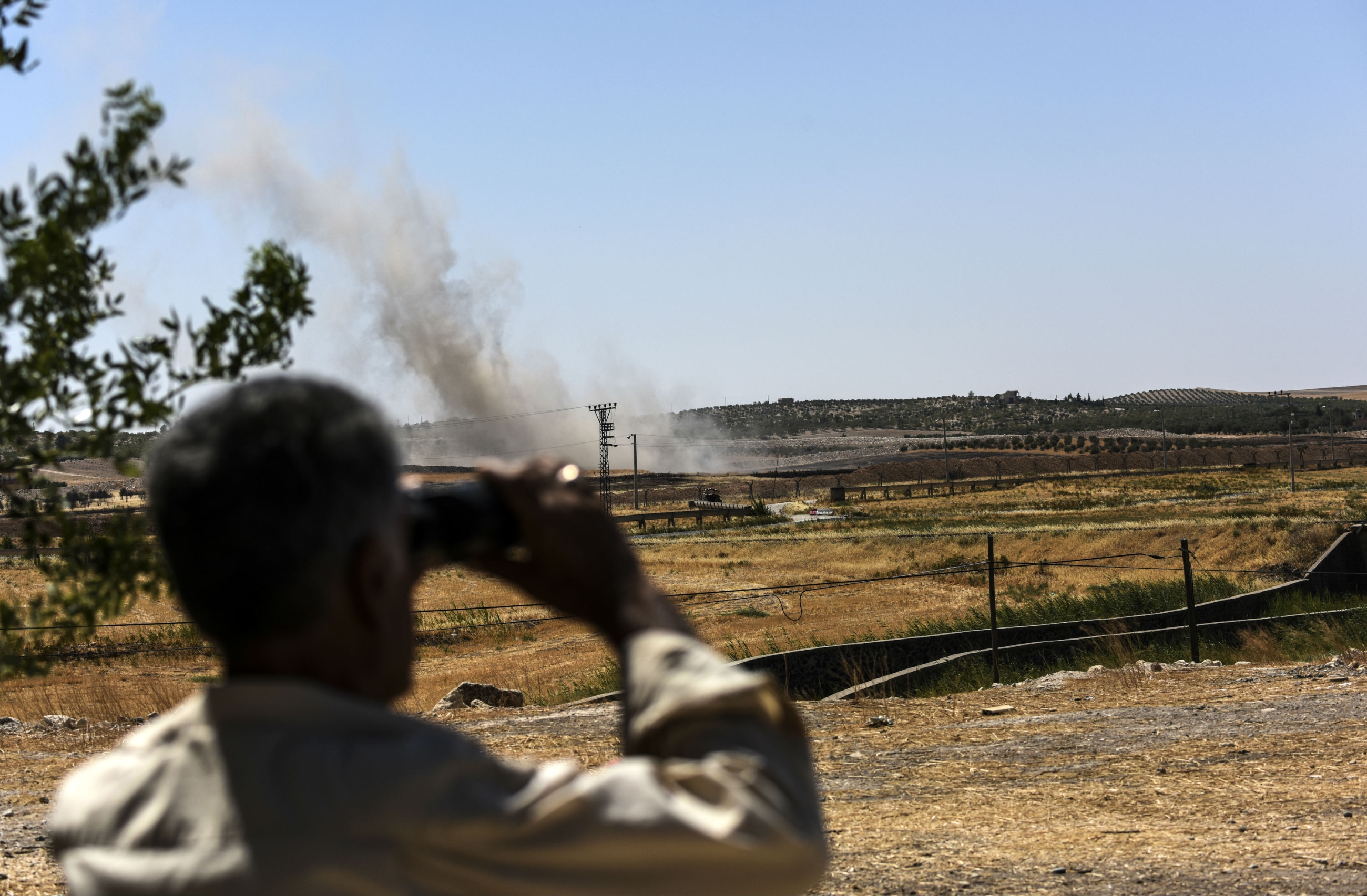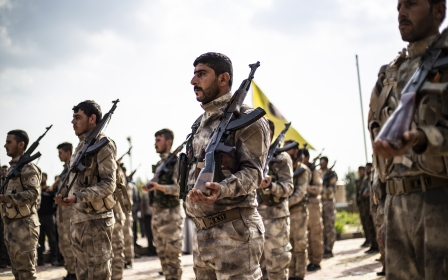Turkey retreated from its safe zone red line, Erdogan acknowledges

Turkish President Tayyip Erdogan acknowledged on Thursday for the first time that his country abandoned one of its fundamental conditions for a safe zone agreement in northeastern Syria with the US.
Speaking to journalists, Erdogan said Donald Trump's team proposed a safe zone narrower than the previously declared Turkish red line, which was a 32km-deep area, and he had accepted it.
“I told [Defence Minister Hulusi Akar and his team] that we should begin to work on this somehow. And we should continue to work on it. It isn’t as large as Trump himself proposed to me, a bit narrower. But we have made plans in accordance with that,” he said, according to a transcript obtained by Middle East Eye.
'It isn’t as large as Trump himself proposed to me, a bit narrower. But we have made plans in accordance with that'
- Recep Tayyip Erdogan
Various sources told MEE that the US safe zone plan agreed by Turkey includes a 15km-deep safe area that meets some core Turkish demands, such as removal of the Kurdish People’s Protection Units (YPG) militia from the area, a recollection of heavy weapons Washington supplied to the YPG, and destruction of its trenches and cement fortifications.
However, it wasn’t immediately clear whether the Turkish military would actually set up stations in the safe zone or would simply conduct joint patrols with US special forces to inspect and surveil the area.
New MEE newsletter: Jerusalem Dispatch
Sign up to get the latest insights and analysis on Israel-Palestine, alongside Turkey Unpacked and other MEE newsletters
Since the foundation of their joint operations centre in Sanliurfa on 12 August, Turkish and American soldiers have conducted aerial reconnaissance missions over the designated safe zone area and the US military has released images allegedly showing that YPG forces were retreating and destroying their positions. Earlier this week, the YPG also declared that it was pulling out of the area.
So far, the Turkish side seems satisfied with the implementation of the agreement. Problems are likely to arise, however.
Yahya Bostan, a prominent columnist at the government-aligned Star daily, wrote on Thursday that parties intend to implement the safe zone plan within 45 days.
“The YPG is leaving the area to a civilian group called the 'Self Defence Forces', which is also supported by the YPG. Turkey is adamant to remove every group associated with the YPG from the area,” he said.
Bostan also added that Turkish and American officials were still discussing the details of the safe zone and some disagreements remained.
One sticking point could be the presence of Turkish troops.
Turkish President Recep Tayyip Erdogan has previously claimed that Turkish soldiers would enter the safe zone and stay there.
However, Mustafa Bali, spokesperson for the Syrian Democratic Forces militia dominated by the YPG, contested the statement earlier this week in a series of tweets posted by the Rojava Information Center.
“For joint Turkish-American patrols, Turkish forces will cross the border once, complete the patrol, and return to their country," he said. “These patrols will not start for some time and occur infrequently, perhaps once every fortnight or once a month."
Bali also alleged that Turkey would not have permanent bases on Syrian soil, but only on the border itself to observe the area.
Erdogan issued a threat on Thursday saying that Turkey would hold its forces and armoured vehicles in the area and if Ankara feels that the agreement isn't being carried out, it would intervene in Syria.
Middle East Eye delivers independent and unrivalled coverage and analysis of the Middle East, North Africa and beyond. To learn more about republishing this content and the associated fees, please fill out this form. More about MEE can be found here.





